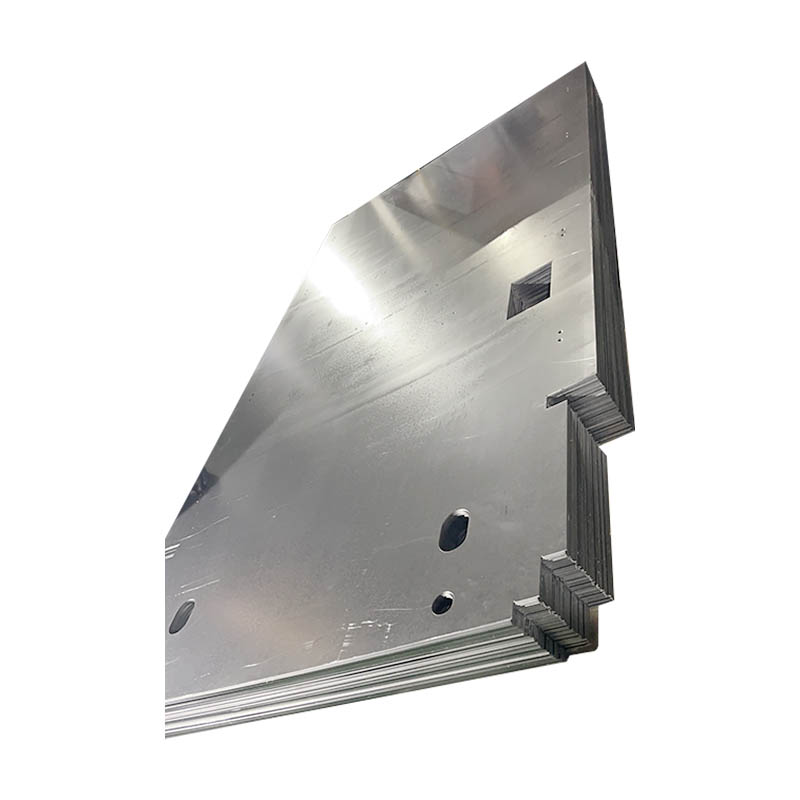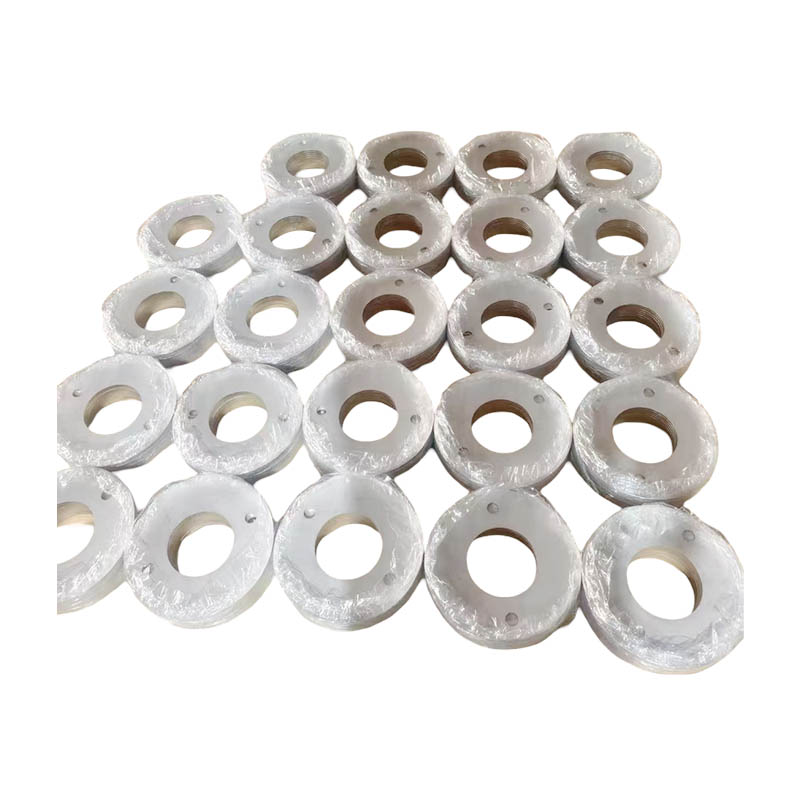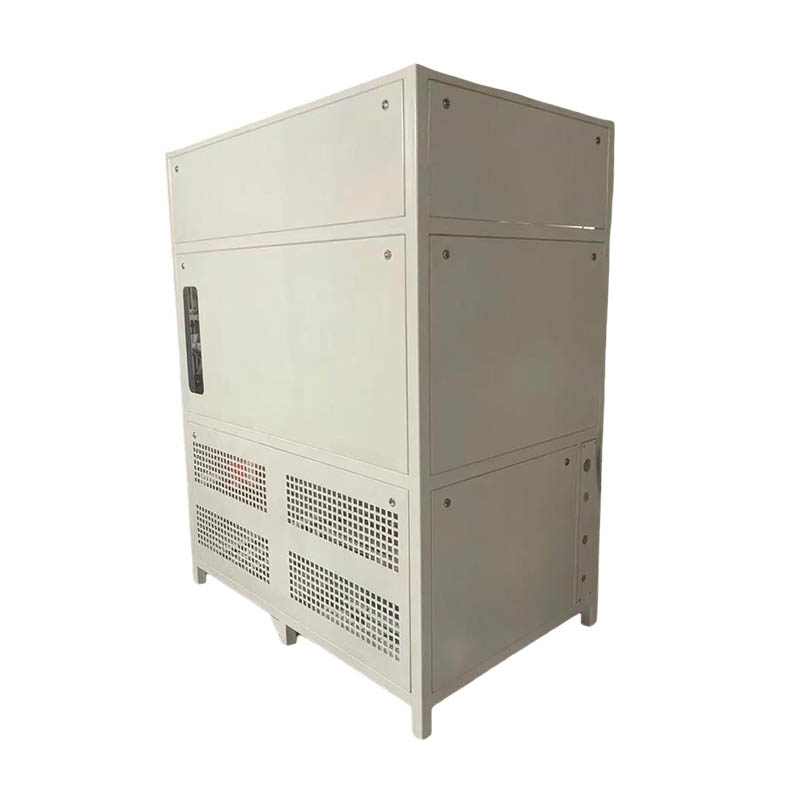How do low-temperature evaporators achieve low energy consumption and low costs?
Release Time : 2025-07-31
As a highly efficient and energy-saving evaporation technology, low-temperature evaporators play a vital role in modern industrial production. Through a series of unique designs and technological innovations, they achieve these goals, not only improving production efficiency but also significantly saving companies significant operating costs. From their operating principles to their practical applications, low-temperature evaporators demonstrate exceptional performance in multiple aspects.
First, the core advantage of low-temperature evaporators lies in their ability to perform evaporation at relatively low temperatures. Traditional evaporation equipment typically requires high temperatures to achieve ideal evaporation results. However, low-temperature evaporators utilize specialized working fluids and optimized design to enable the evaporation process to proceed at near-ambient or even mild temperatures. This significantly reduces energy consumption, as additional heating to high temperatures is not required, reducing the need for a heat source. Furthermore, the lower evaporation temperature simplifies the cooling process, further reducing energy costs. This low energy consumption not only benefits the environment but also provides direct economic benefits to users.
Second, low-temperature evaporators utilize advanced automated control systems to ensure smooth and efficient operation throughout the evaporation process. The automation system monitors various parameters in real time and automatically adjusts operating conditions based on actual conditions to maintain optimal evaporation conditions. For example, when it detects changes in feed volume, the system automatically adjusts the evaporation rate to avoid over- or under-evaporation. This intelligent management not only improves production efficiency but also reduces the need for manual intervention, thereby lowering labor costs. Furthermore, stable operation extends equipment life, reduces maintenance and repair costs, and further reduces overall operating costs.
Furthermore, the low-temperature evaporator is designed for compactness and efficiency, requiring a small footprint and no complex supporting facilities. Compared to traditional large-scale evaporation equipment, the low-temperature evaporator has a simpler structure and more flexible installation and layout. This makes it suitable for a variety of site conditions, whether for new plant construction or renovations of existing plants. The smaller footprint not only saves valuable space but also simplifies infrastructure development and reduces civil engineering investment, a significant advantage for space-constrained businesses.
Furthermore, the low-temperature evaporator eliminates the need for raw steam as a heat source, another key factor in reducing operating costs. Traditional evaporation processes often rely on high-temperature steam generated by boilers to provide heat. Low-temperature evaporators, however, utilize alternative energy sources, such as electricity or other low-grade heat sources. This avoids the high costs of building and maintaining complex steam systems and eliminates the safety hazards associated with steam leaks. Furthermore, by eliminating the need to handle high-temperature, high-pressure steam, the equipment's safety and reliability are significantly improved, further ensuring continuous and stable production.
Notably, low-temperature evaporators are particularly suitable for handling heat-sensitive materials. Many food, pharmaceutical, and chemical products are susceptible to decomposition or deterioration at high temperatures, affecting product quality. Low-temperature evaporators can complete the evaporation and concentration process under mild conditions, effectively preserving the physical and chemical properties of these sensitive materials. This not only ensures high-quality end products but also broadens the technology's application range. Low-temperature evaporators are an ideal choice for industries with stringent temperature requirements.
Furthermore, the low-temperature evaporator's operation is simple and intuitive, making it easy to master. Its streamlined design and simple, intuitive operation steps make it easy for even those unfamiliar with evaporation technology to quickly master it. Furthermore, due to the equipment's compact structure and high degree of automation, daily maintenance and cleaning are relatively easy. This simple and easy-to-use operation significantly reduces the operator's burden, improves work efficiency, and reduces the risk of failures caused by misoperation.
Finally, the low-temperature evaporator offers excellent part-load operation characteristics, adapting to fluctuating demand under varying operating conditions. In actual production processes, feed rates and evaporation requirements often fluctuate. With its flexible adjustment capabilities and efficient energy recovery mechanism, the low-temperature evaporator maintains stable performance while maximizing available resources, achieving energy conservation and emission reduction goals. Whether operating at full or part load, the low-temperature evaporator performs exceptionally well, providing strong support for the company's sustainable development.
In summary, the low-temperature evaporator successfully achieves low energy consumption and low costs through its low-temperature evaporation, automated control, compact design, no need for raw steam, compatibility with heat-sensitive materials, and simple operation procedures. Each improvement is designed to provide a better user experience and demonstrates a deep understanding and respect for user needs and social responsibility. In the future, as new materials and technologies continue to emerge, low-temperature evaporators will demonstrate their unique value in even more areas, propelling the entire industry to new heights. Both emerging and established industries can benefit from this, working together to create more efficient and reliable production processes.
First, the core advantage of low-temperature evaporators lies in their ability to perform evaporation at relatively low temperatures. Traditional evaporation equipment typically requires high temperatures to achieve ideal evaporation results. However, low-temperature evaporators utilize specialized working fluids and optimized design to enable the evaporation process to proceed at near-ambient or even mild temperatures. This significantly reduces energy consumption, as additional heating to high temperatures is not required, reducing the need for a heat source. Furthermore, the lower evaporation temperature simplifies the cooling process, further reducing energy costs. This low energy consumption not only benefits the environment but also provides direct economic benefits to users.
Second, low-temperature evaporators utilize advanced automated control systems to ensure smooth and efficient operation throughout the evaporation process. The automation system monitors various parameters in real time and automatically adjusts operating conditions based on actual conditions to maintain optimal evaporation conditions. For example, when it detects changes in feed volume, the system automatically adjusts the evaporation rate to avoid over- or under-evaporation. This intelligent management not only improves production efficiency but also reduces the need for manual intervention, thereby lowering labor costs. Furthermore, stable operation extends equipment life, reduces maintenance and repair costs, and further reduces overall operating costs.
Furthermore, the low-temperature evaporator is designed for compactness and efficiency, requiring a small footprint and no complex supporting facilities. Compared to traditional large-scale evaporation equipment, the low-temperature evaporator has a simpler structure and more flexible installation and layout. This makes it suitable for a variety of site conditions, whether for new plant construction or renovations of existing plants. The smaller footprint not only saves valuable space but also simplifies infrastructure development and reduces civil engineering investment, a significant advantage for space-constrained businesses.
Furthermore, the low-temperature evaporator eliminates the need for raw steam as a heat source, another key factor in reducing operating costs. Traditional evaporation processes often rely on high-temperature steam generated by boilers to provide heat. Low-temperature evaporators, however, utilize alternative energy sources, such as electricity or other low-grade heat sources. This avoids the high costs of building and maintaining complex steam systems and eliminates the safety hazards associated with steam leaks. Furthermore, by eliminating the need to handle high-temperature, high-pressure steam, the equipment's safety and reliability are significantly improved, further ensuring continuous and stable production.
Notably, low-temperature evaporators are particularly suitable for handling heat-sensitive materials. Many food, pharmaceutical, and chemical products are susceptible to decomposition or deterioration at high temperatures, affecting product quality. Low-temperature evaporators can complete the evaporation and concentration process under mild conditions, effectively preserving the physical and chemical properties of these sensitive materials. This not only ensures high-quality end products but also broadens the technology's application range. Low-temperature evaporators are an ideal choice for industries with stringent temperature requirements.
Furthermore, the low-temperature evaporator's operation is simple and intuitive, making it easy to master. Its streamlined design and simple, intuitive operation steps make it easy for even those unfamiliar with evaporation technology to quickly master it. Furthermore, due to the equipment's compact structure and high degree of automation, daily maintenance and cleaning are relatively easy. This simple and easy-to-use operation significantly reduces the operator's burden, improves work efficiency, and reduces the risk of failures caused by misoperation.
Finally, the low-temperature evaporator offers excellent part-load operation characteristics, adapting to fluctuating demand under varying operating conditions. In actual production processes, feed rates and evaporation requirements often fluctuate. With its flexible adjustment capabilities and efficient energy recovery mechanism, the low-temperature evaporator maintains stable performance while maximizing available resources, achieving energy conservation and emission reduction goals. Whether operating at full or part load, the low-temperature evaporator performs exceptionally well, providing strong support for the company's sustainable development.
In summary, the low-temperature evaporator successfully achieves low energy consumption and low costs through its low-temperature evaporation, automated control, compact design, no need for raw steam, compatibility with heat-sensitive materials, and simple operation procedures. Each improvement is designed to provide a better user experience and demonstrates a deep understanding and respect for user needs and social responsibility. In the future, as new materials and technologies continue to emerge, low-temperature evaporators will demonstrate their unique value in even more areas, propelling the entire industry to new heights. Both emerging and established industries can benefit from this, working together to create more efficient and reliable production processes.







